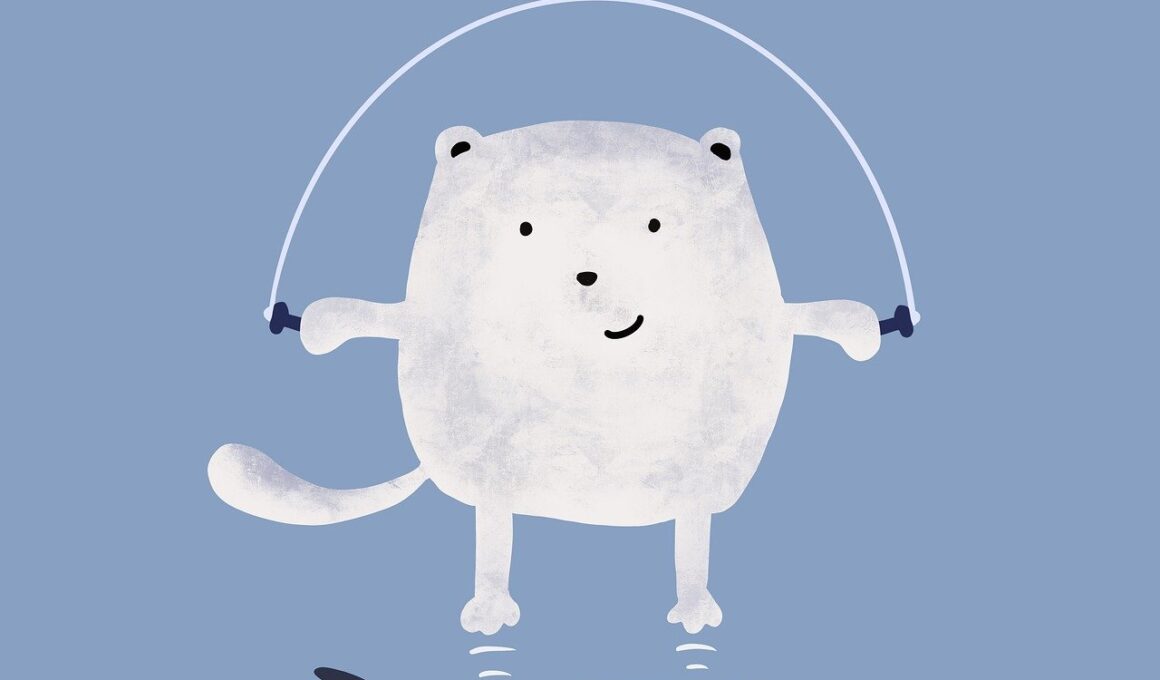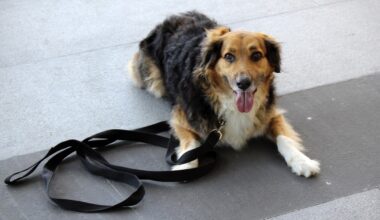Understanding the Need for Exercise
As our beloved felines grow older, they may become less active, leading to potential health issues. In multi-cat households, encouraging older cats to engage in regular exercise becomes especially important. Understanding their specific needs is essential. While younger cats may naturally engage in vigorous play, older cats might prefer gentler activities. Observing their habits and recognizing the signs of decreased energy will help caregivers tailor an exercise routine. Age-related conditions such as arthritis can hinder mobility, making exercise even more critical. To promote physical activity among older cats, owners should incorporate various forms of stimulation. Motion-activated toys, for example, can entice even the most reluctant feline to move. Interactive feeding toys can also replace traditional dishes, making mealtime a fun activity. It’s equally important to provide safe spaces where cats can explore with minimal risk of injury. A cat tree with soft surfaces, scratching posts, and cozy hideaways can help encourage movement naturally. Ensuring that younger cats respect their older companions will help too. Avoiding aggressive play can create an atmosphere conducive to exercise among all ages.
Another way to encourage activity is through structured playtime with their humans. Setting a regular routine allows older cats to anticipate and engage with the planned activities energetically. Using toys that mimic prey, like feather wands or laser pointers, can stimulate their natural hunting instincts. However, it’s essential to be mindful of their limitations. Play sessions should be short and not overly strenuous, allowing the cat to rest as they need. Additionally, including all cats in shared playtime can foster a sense of camaraderie and social interaction among the household. Cats thrive on companionship, and the playful antics of their peers can often inspire even the oldest felines to join in. Creating an environment that promotes socialization ensures that all cats feel secure and connected. Owners may want to designate specific times for group play, making it a fun routine for everyone involved. Encouraging healthy competition is also beneficial—allowing cats to engage in light-hearted rivalry can spark excitement. Introducing new toys periodically keeps things fresh, encouraging exploration and interaction among the household cats.
Utilizing Vertical Space
Multi-cat homes often benefit from utilizing vertical space to encourage exercise. Cats love climbing, and providing vertical structures can motivate them to move and play. Cat trees, shelves, and perches can make exciting environments for older cats to explore. By creating these elevated spaces, caregivers can cater to both active and cautious cats. Some felines prefer to observe from high places while waiting for the right moment to engage. A variety of heights allows older cats to choose where they feel most comfortable. Additionally, ensuring that these spaces are sturdy will foster confidence in their ability to explore without fear. It’s also a great idea to facilitate safe access to these heights. Placing ramps or providing step stools can help reluctant climbers feel supported and willing to venture upward. This endeavor nurtures not only physical exercise but also mental stimulation. Cats can enjoy the view and engage in natural hunting behavior. Observing their surroundings can encourage them to be more active while feeling secure in their domain. Thus, height can serve as an excellent tool for promoting wellness in older cats.
Building enriching environments can enhance cats’ physical activity levels as well. Each cat requires unique mental stimulation to stay engaged throughout the day, especially in multi-cat households. Interactive toys, puzzle feeders, and scent trails can entice older cats to explore their surroundings actively. Offering different textures, hiding places, and climbing aids keeps their senses engaged, promoting both exercise and fun. Organizing scavenger hunts by hiding treats or toys around a designated area can spark interest. As cats search, they exercise their minds and bodies simultaneously. Providing scratching surfaces at various locations encourages stretching and movement, and makes it easier for cats to engage naturally. Balancing the environment will help to ensure that every cat in the household has adequate opportunities for play. Adding elements such as tunnels or boxes creates an inviting landscape where cats can explore confidently and independently. Changing the arrangement of furniture or toys can provide novelty, keeping their curiosity piqued without overwhelming them. Encouraging exploration and offering safe zones where older cats can retreat ensures they remain active while monitoring their comfort levels.
Pawsitive Reinforcement During Exercise
Incorporating positive reinforcement when engaging older cats in exercise is vital. Cats respond well to rewards, and using treats or praise during playtime can have excellent results. It helps create a positive association with physical activity, making them more likely to pursue engagement. Offering a favorite snack during play can motivate even the laziest of older felines. Additionally, ensuring that the atmosphere remains calm and unpressured will encourage them to participate. Nervous cats may not engage if they feel overwhelmed, so fostering a relaxed environment is crucial. Gradual introductions to new toys or activities should be employed, giving cats time to acclimate. Owners should vary their approaches—some cats prefer solo exercises, while others enjoy group activities. Recognizing individual preferences aids in tailoring experiences that promote overall activity. By celebrating the small victories during playtime, owners can build a strong bond with their senior felines and inspire them to move. Using gentle praise and affection during or after exercise reinforces these actions, proving that staying active can also be rewarding.
Managing diet in line with exercise can also improve older cats’ activity levels. Cats need balanced nutrition tailored to their age and health status. Consulting with a veterinarian helps owners choose the right diet that supports an active lifestyle. A well-rounded diet will provide the necessary energy for stimulating activities and keep older cats healthy as they exercise more. Offering smaller, more frequent meals can help manage energy spikes and prevent discomfort. Making mealtime interactive can further encourage movement; instead of placing food in a bowl, owners can scatter kibble throughout the home or use puzzle feeders. This method promotes physical activity as the cat searches for food while also preventing boredom. Additionally, ensuring fresh water is always available encourages hydration, especially if cats increase their activity level. A proper diet is a support system for routine exercise, enabling cats to participate more actively in playtime with their roommates. As their energy levels rise and health improves, older cats will likely engage more naturally in the shared household activities.
Monitoring Health and Safety
Lastly, monitoring health and safety is paramount in multi-cat households when encouraging exercise. Older cats might have specific health conditions that can influence their ability to play or exercise. Regular veterinary check-ups ensure that their unique needs are addressed appropriately. Keeping track of any changes in behavior, such as reluctance to move or sudden lethargy, is crucial. It may indicate discomfort or a potential underlying medical concern that needs attention. Owners should observe their cats during exercise to identify any signs of distress. Adjusting play based on individual capabilities, especially as mobility challenges arise, is necessary to maintain a safe environment. Ensuring that toys are safe and appropriate for their age reduces the risk of injuries or accidents. If older cats have joint discomfort, opting for softer surfaces or gentle play can make all the difference. A holistic approach, from diet to exercise, encourages older cats to remain active. With proper care and monitoring, caregivers can effectively engage their senior cats, ensuring that they stay healthy and happy in multi-cat settings.


